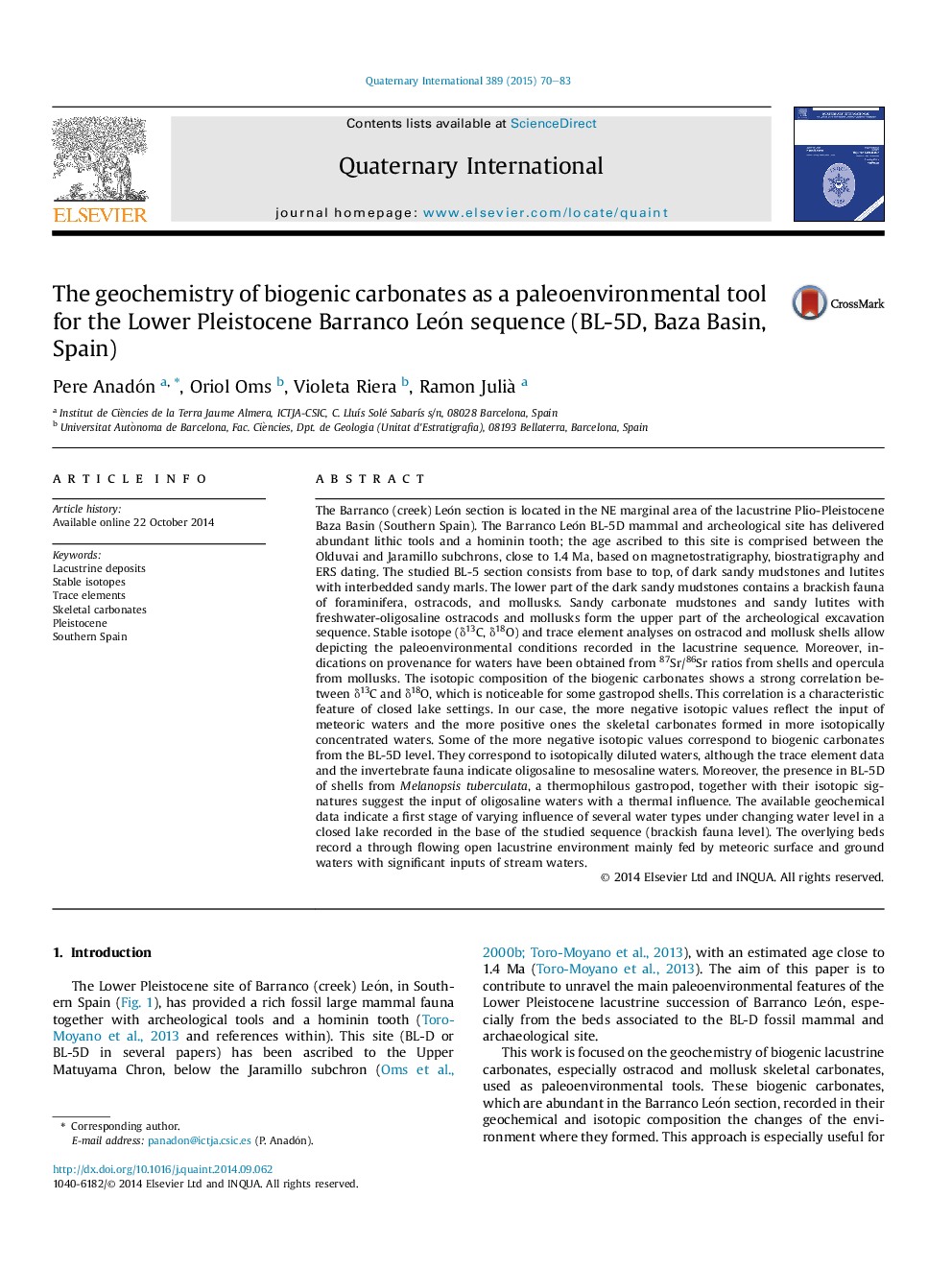| کد مقاله | کد نشریه | سال انتشار | مقاله انگلیسی | نسخه تمام متن |
|---|---|---|---|---|
| 1040480 | 1484109 | 2015 | 14 صفحه PDF | دانلود رایگان |

The Barranco (creek) León section is located in the NE marginal area of the lacustrine Plio-Pleistocene Baza Basin (Southern Spain). The Barranco León BL-5D mammal and archeological site has delivered abundant lithic tools and a hominin tooth; the age ascribed to this site is comprised between the Olduvai and Jaramillo subchrons, close to 1.4 Ma, based on magnetostratigraphy, biostratigraphy and ERS dating. The studied BL-5 section consists from base to top, of dark sandy mudstones and lutites with interbedded sandy marls. The lower part of the dark sandy mudstones contains a brackish fauna of foraminifera, ostracods, and mollusks. Sandy carbonate mudstones and sandy lutites with freshwater-oligosaline ostracods and mollusks form the upper part of the archeological excavation sequence. Stable isotope (δ13C, δ18O) and trace element analyses on ostracod and mollusk shells allow depicting the paleoenvironmental conditions recorded in the lacustrine sequence. Moreover, indications on provenance for waters have been obtained from 87Sr/86Sr ratios from shells and opercula from mollusks. The isotopic composition of the biogenic carbonates shows a strong correlation between δ13C and δ18O, which is noticeable for some gastropod shells. This correlation is a characteristic feature of closed lake settings. In our case, the more negative isotopic values reflect the input of meteoric waters and the more positive ones the skeletal carbonates formed in more isotopically concentrated waters. Some of the more negative isotopic values correspond to biogenic carbonates from the BL-5D level. They correspond to isotopically diluted waters, although the trace element data and the invertebrate fauna indicate oligosaline to mesosaline waters. Moreover, the presence in BL-5D of shells from Melanopsis tuberculata, a thermophilous gastropod, together with their isotopic signatures suggest the input of oligosaline waters with a thermal influence. The available geochemical data indicate a first stage of varying influence of several water types under changing water level in a closed lake recorded in the base of the studied sequence (brackish fauna level). The overlying beds record a through flowing open lacustrine environment mainly fed by meteoric surface and ground waters with significant inputs of stream waters.
Journal: Quaternary International - Volume 389, 2 December 2015, Pages 70–83